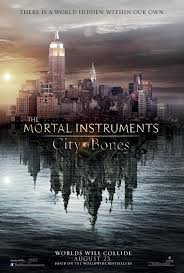I’ve been nominated for the Liebster Award! This is a blog award that’s been around for quite a while, so there are different versions of the rules floating around the blogosphere. I’ll follow the ones given by the blogger who nominated me — My Luggage is Elsewhere, a fascinating travel blog by a young woman from Bosnia.
The Rules for the Liebster Award are simple:
1. Each nominee must link back the person who nominated them.
2. Answer the 10 questions which are given to you by the nominator.
3. Nominate 10 other bloggers for this award who have less than 400 followers.
4. Create 10 questions for your nominees to answer.
5. Let the nominees know that they have been nominated by going to their blog and notifying them.
And here are the 10 questions posed by My Luggage is Elsewhere, with my answers:
1. If you could have one special power, what would it be?
I’ve always wanted to be able to fly.
2. At what age of your life will you consider yourself “old?”
That’s a moving target! Ten years ago I thought 30 was getting up there and 40 was ancient. Right now I’d say 60, but I’m sure my answer will be different as that number approaches….
3. Hard copy of a book or electronic edition? Why?
Both! I will happily consume books in any form. I can’t imagine giving up my shelves of dead tree books, but I love my Kobo ereader too. When I choose an ebook over a paper book, I tend to do it for one of several reasons.
4. What is the most amazing place you have ever been to?
The Taj Mahal. A bit cliché, I know, it’s a major tourist attraction…but sometimes there’s a reason for that. We went at dawn, and it was so beautiful I could barely speak. Proper post, with photos, coming soon….
5. Do you blog more for yourself or for others to read?
I created this blog as an author platform, so even though I love writing the posts, I’d have to say I blog for others. Still looking for the best intersection between what I’m interested in writing about and what others are interested in reading, though!
6. Sunday – a pajamas day, or a day out?
Pajamas, all the way. I’m usually out on Saturdays, so Sunday is my day to sleep in and lounge about.
7. What is your biggest talent?
Writing, I hope.
8. What is one thing without which you never go out?
A book. Heaven forbid I should be caught on public transit without one.
9. Country or a city life?
City. I crave nature, so I try to get out of the city several times a year, but I don’t think I could live without all the amenities of a big city — restaurants, public transit, movie theatres, and so on.
10. What’s one of the strangest things you have ever done?
I broke my arm while roller-skating with my eyes closed. Don’t ask….
Rule 3 for the Liebster Award is to nominate 10 other bloggers who have fewer than 400 followers. Sadly, most of the bloggers I know have already done the Liebster Award, since it’s been around for so long. I’m going to nominate a few who I don’t think have, and if you’d like to join in, let me know in the comments and I’ll add you!
1. Erin Zarro
2. KD Sarge
3. Kit Campbell
And my questions for the nominees are:
1. Star Wars or Star Trek?
2. What’s your favourite item of clothing? Why?
3. What do you like best about blogging?
4. If you could live in another country, which one would it be?
5. Tea or coffee?
6. Oceans or mountains?
7. What are you reading right now?
8. Tell us a memory from when you were a kid.
9. Who’s your favourite superhero (or supervillain)?
10. Vampires, werewolves, or zombies?
Go to it, nominees, and have fun!






